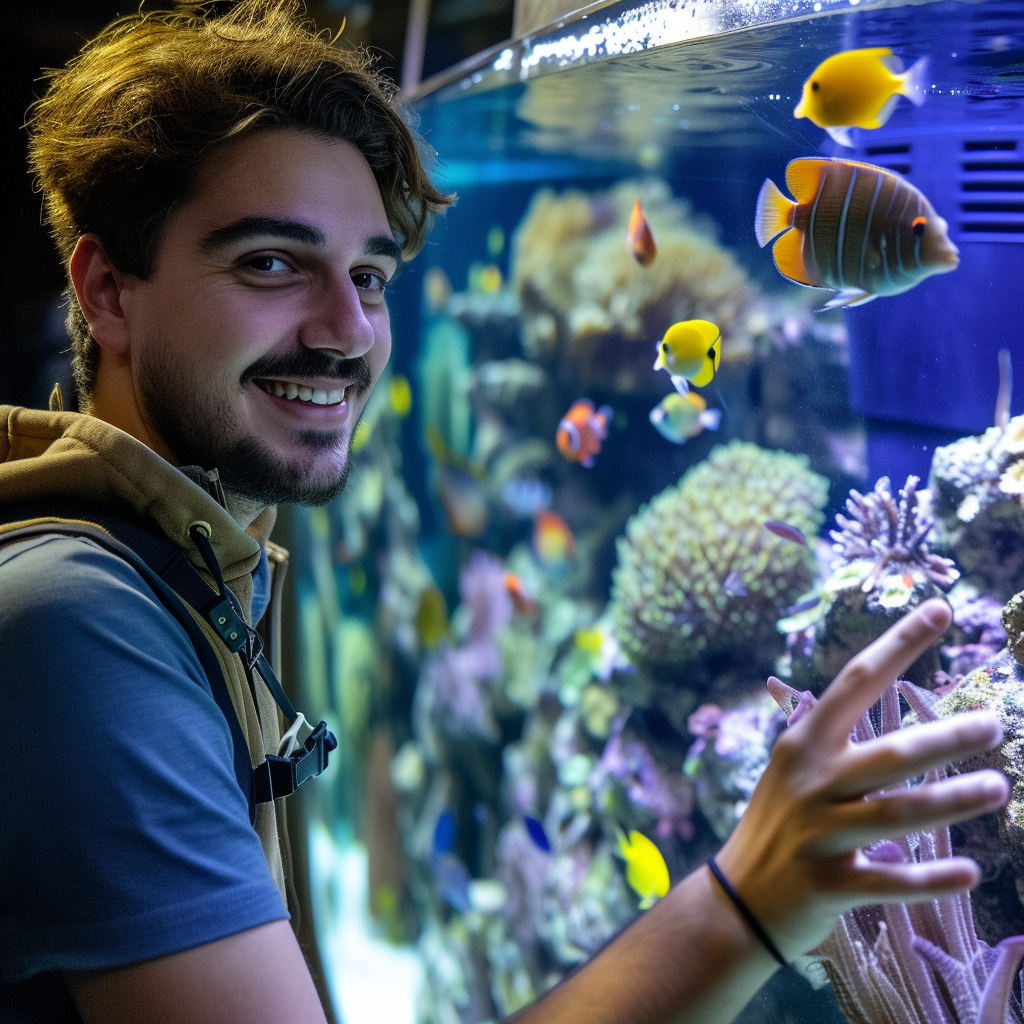Nutrition for terrarium animals: An essential guide for thriving terrarium worlds
Feeding terrarium animals is an art in itself. Whether it's iridescent scales, glowing eyes in the dark or the gentle hum of a terrarium corner in the living room - the fascination for these small ecosystems is unbroken. But there is much more behind the glassy idyll than meets the eye. We need to be sensitive and attentive, especially when it comes to feeding our little flatmates. But don't worry! With a few tips and tricks, your Terrarium into an oasis where your pets will feel right at home.
A menu as colourful as the rainforest canopy
The diet of terrarium animals is as varied as the inhabitants themselves. From insect eaters to plant lovers - the range is broad. But they all have one thing in common: the need for a species-appropriate and balanced diet that comes as close as possible to natural conditions.
- For the meat fans: insectivores. A delicatessen menu for our insectivorous terrarium animals could consist of grasshoppers, crickets and mealworms. The important thing here is to feed the insects themselves a balanced diet beforehand - keyword: gut-loading. In this way, we indirectly supply our terrarium animals with important nutrients.
- Green stuff gourmets: herbivores. A varied mixture of leaves, flowers and fruit is important here. Wild herbs such as dandelion or ribwort plantain are not only popular with rabbits, but are also a healthy snack for our terrarium inhabitants. But beware: not every plant is edible and some can even be poisonous.
- The gourmets: omnivores. They take the best of both worlds. A balanced mixed diet consisting of animal and plant-based ingredients wins the race here.
Timing is everything: when to feed?
Not only the what, but also the when is crucial. Many terrarium animals are nocturnal and prefer to be fed in the evening. On the other hand, there are also diurnal creatures that crave a hearty breakfast in the morning. The basic rule is: observe your terrarium friends and follow their natural rhythm.
The feeding technique: closer to nature
You can get creative when feeding your terrarium animals! For example, getting food is a great way to keep your animals busy and encourage their hunting instincts. Food tweezers can work wonders for shy animals and at the same time build a bond between you.
- Live feeding: An action-packed method that encourages the natural hunting instinct, especially in insectivores. But be careful not to feed too often, as this can cause stress.
- Hide and seek: Hiding food in different places in the terrarium stimulates curiosity and the desire to move.
The little 1×1 of supplementation
Even the best basic diet cannot always fulfil all nutritional requirements. This is where supplements come into play. Calcium and vitamins should not be missing from any diet. But beware: too much of a good thing can also be harmful. A balanced dosage recommended by an experienced terrarium keeper or vet is advisable.
It's the quality that counts
The quality of the food plays a decisive role in the healthy nutrition of terrarium animals. Make sure that the food is fresh and free from pesticides. When buying food animals, it is important to pay attention to their origin and nutritional status.
Conclusion: A question of sensitivity
Ultimately, feeding terrarium animals is a sensitive subject that requires a little sensitivity. With the right research, observation and a touch of creativity, you can give your little companions a long and healthy life in the terrarium. Food is more than just food - it is a key to the well-being of our reptiles, amphibians and insects. And when their eyes light up every time you feed them, you know you're doing everything right.
Ultimately, we all share the same passion: the love and amazement for life in all its colourful facets - whether inside or outside the terrarium. With respect, patience and the right know-how, your terrarium will become a real eye-catcher and an oasis of well-being for its inhabitants. Here's to many exciting and enriching hours with your scaly, feathered or chitin-armoured roommates!
FAQs
What do reptiles eat?
The range of food that reptiles eat is enormously diverse. Their diet ranges from worms, snails, insects, arthropods, small mammals, birds, other reptiles and amphibians to fish and plant food. Depending on the species and habitat, reptiles have developed into true food specialists.
What is a lizard's favourite food?
Lizards, such as the sand lizard, are predatory animals that feed primarily on insects and spiders. Grasshoppers and caterpillars are particularly popular with them. However, caution is advised as they can become prey for birds, snakes and larger mammals. It is important to know that many lizard species are strictly protected.
Which herbs can a tortoise eat?
European tortoises in particular are herbivores that eat a variety of flowers and herbs. These include dandelion, daisies, buttercups, yarrow, plantain, coltsfoot, meadow grass, parsley and dill. In the cold season, hay cobs, lamb's lettuce or sprouted chicory can be used as a substitute. It is important to ensure a balanced and species-appropriate diet.
What do water lizards eat?
Water lizards, which usually live in a fixed habitat and are diurnal, feed primarily on insects, spiders and beetles. Snails and worms are also part of their diet. Their diet is therefore predominantly carnivorous, which should be taken into account when feeding them in a terrarium.
Author
-

David is a passionate aquarist with more than 20 years of experience in setting up and maintaining freshwater and saltwater aquariums. He specialises in the biodiversity of aquatic ecosystems, aquascaping and the species-appropriate keeping of aquarium fish. His articles on haustierewissen.de are a treasure trove for aquarium enthusiasts looking for sound advice and creative ideas for their underwater worlds.
View all posts




